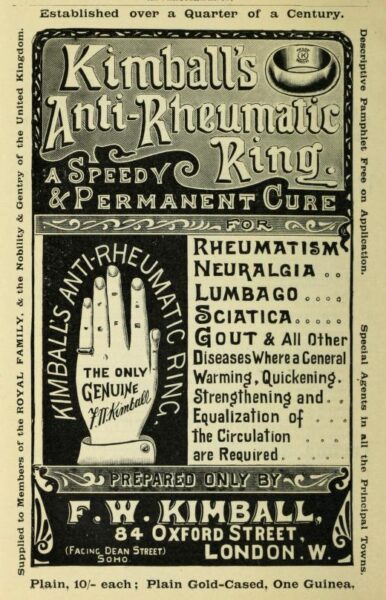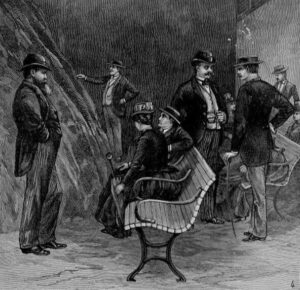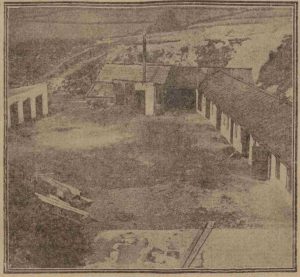 STeel Spring or Jointed Trusses for the help and cure of Ruptures for Men, Women and Children in the Navel, Cod or Groin. Belt Trusses, made without Iron or Steel Bow, the Belt or Girdle is with Neats Leather, Silk or Velvet, being very easy, with a Spring good for all tender Bodies, especially for the Female Sex, keeping up the Rupture with more Ease and Certainty than any pretended new invention. Good for all Travellers either by Sea or Land. Strait Stockings, with other Instruments to help the infirm, made and sold by GUY NUTT at the White Naked Boy in Westmoreland Court in Bartholomew Close. His Wife helps those of her own Sex, being very skilful in the Business. To be spoke with every Day at his own House.
STeel Spring or Jointed Trusses for the help and cure of Ruptures for Men, Women and Children in the Navel, Cod or Groin. Belt Trusses, made without Iron or Steel Bow, the Belt or Girdle is with Neats Leather, Silk or Velvet, being very easy, with a Spring good for all tender Bodies, especially for the Female Sex, keeping up the Rupture with more Ease and Certainty than any pretended new invention. Good for all Travellers either by Sea or Land. Strait Stockings, with other Instruments to help the infirm, made and sold by GUY NUTT at the White Naked Boy in Westmoreland Court in Bartholomew Close. His Wife helps those of her own Sex, being very skilful in the Business. To be spoke with every Day at his own House.
Source: The London Journal 7 Jan 1727
By the time of this advert, trusses were already a long-established treatment for hernia. The woodcut below, from Peter Lowe’s A Discourse of the Whole Art of Chyrurgerie (1597) shows an example of a 16th-century truss of the type advocated and popularised by Ambroise Paré.
Trusses, however, were only one way of dealing with a hernia. You could try taking herbs orally, such as in this recipe given by Robert Boyle in 1696:
Having well-cleans’d the roots of Sigillum Salmonis, scrape one Ounce of them into a Quart of Broth, and let the Patient take a Mess, or a Porrenger full of it for his Break-fast; or else give half a Dram or two Scruples of the Powder of it at a time, in any convenient Vehicle.
The likelihood of this working seems slim, but it was more pleasant than an ancient Egyptian remedy described by Prospero Alpini, who had encountered a modern version of it during his travels in Egypt in the 1580s. A pyramid of goat’s dung – or, alternatively, mushrooms – was moulded over the hernia and set on fire in order to cauterise it. The method was still used in Alpini’s time, but with a mound of linen strips rather than dung.
Throughout the 18th century, the plethora of potential remedies included caustics, powders, plaisters, anointing the hernia with eggs, applying a decoction of camomile flowers, and administering tobacco-smoke clysters – which, according t0 William Buchan in Domestic Medicine (1769), ‘have been often known to succeed where every other method failed.’
Should the hernia become strangulated, however, there was nothing else for it but to undergo an operation. Percivall Pott described the process in A Treatise on Ruptures (1756) – the full account of the operation is too long to reproduce here, but you can get a general idea of what it’s like from the beginning:
When the operation shall be thought necessary, the manner of performing it is this:
The pubis and groin must be shaved clean, and the patient laid upon a table of convenient height, on his back, with his legs hanging easily over the end of it, then with a straight dissecting knife an incision must be made thro’ the skin and membrana adiposa, beginning just above the ring of the abdominal muscle, and continuing quite down to the inferior part of the scrotum…
Fortunately for most sufferers, the safest and most practical option was to wear a well-fitted truss indefinitely. Pott advised that:
With a truss properly made, and carefully wore, the meaner kind of people may be rendered fit for all the offices of life, will be capable of labour of any kind, of walking, of riding, &c. as all those find themselves to be, who are willing to do these kind of things
He warned, however, against unqualified practitioners who would misdiagnose other conditions as ruptures, and send patients away with a truss on their venereal bubo or abscess. Pott’s comments on ruptured patients’ reluctance to consult a physician are pertinent to quackery on a wider scale:
With this opinion and this fear, these pretenders are well acquainted, and very lucrative use do they make of them ; they well know, that the man who looks on his disorder as a material imperfection in his form, or as the cause of any debility, will be glad to be rid of it at almost any expence or trouble : hence the ignorant and credulous are subjected to tedious confinements, painful applications, and hazardous operations, while the timorous and bashful are cheated out of large sums of money for imaginary diseases or pretended cures.
Above: some examples of 18th-century trusses, engraved by Thomas Jefferys. This and the 16th-century image are used courtesy of Wellcome Images.





Oh goodness me! The Egyptian ‘remedy’ sounds awfully drastic, but if the sufferer was in sufficient discomfort I suppose they’d try anything. Another great fact-filled blog! Thanks xx
I love the model’s pose! This season, all fasionable hernia patients will be wearing….
Sorry, that should be ‘fashionable’.
As usual, you have my eyes watering!
Hi C,
Essie isn’t the only one, still recovering from the image presented by Percivall Pott in A Treatise on Ruptures (1756)
Thanks for the comments, everyone!
Excellent! Having suffered with a hernia, I can’t imagine what it was like to be stuck with one two hundred and fifty years ago. Agony.
Oh dear God! That poor model…
Such a tiny wiener… Obviously not Italian.